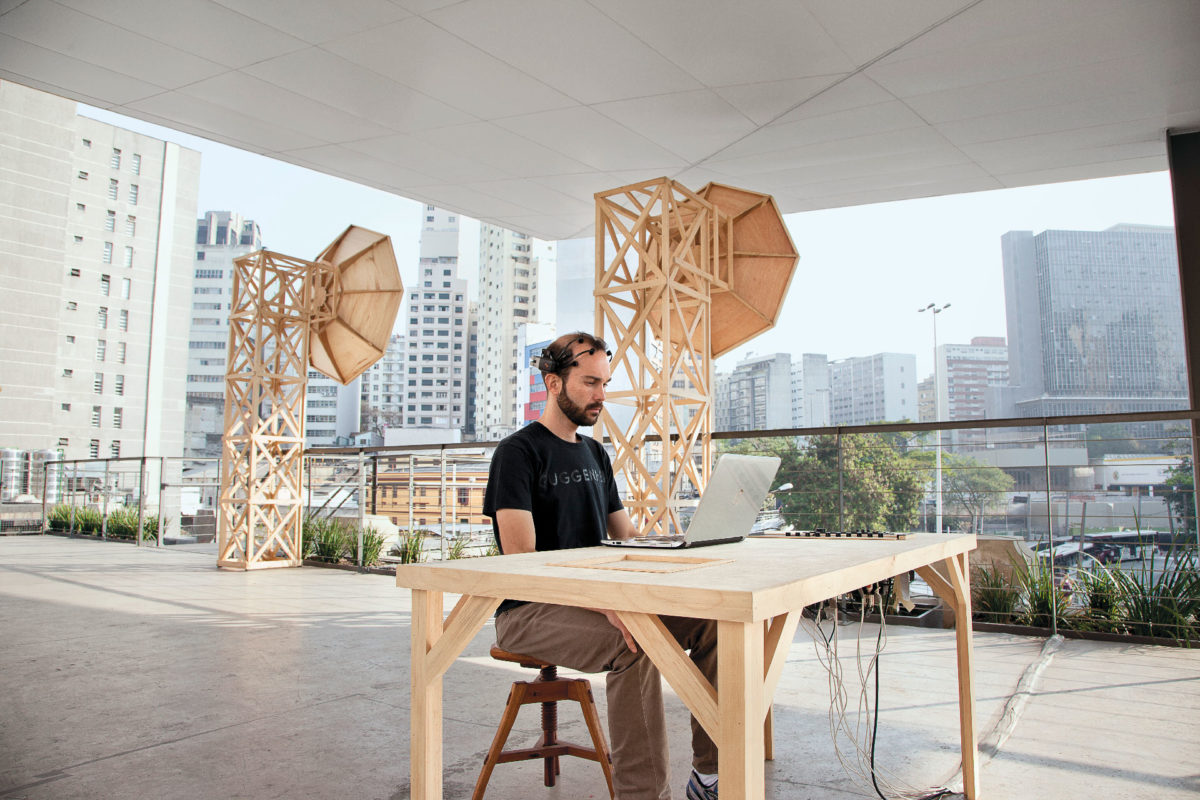Artist Guilherme Cunha’s work establishes relationships between social structures, science and perceptual models. In his final project for his residence at Red Bull Station, the visitors’ cerebral activity is transformed into sound and, through structures similar to antennas, projected into the downtown cityscape.
We developed software that captures brain waves through an EKG machine and converts them to an audio signal. Each of the six speakers was associated with a region of the brain so that the more intense thoughts corresponded to higher sounds.
